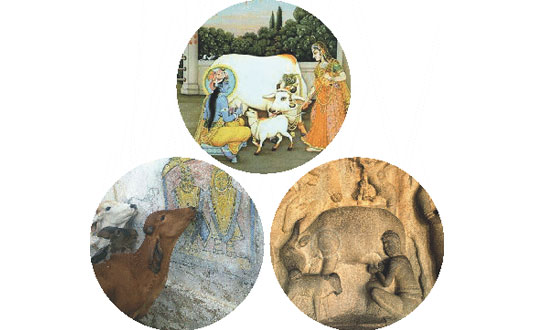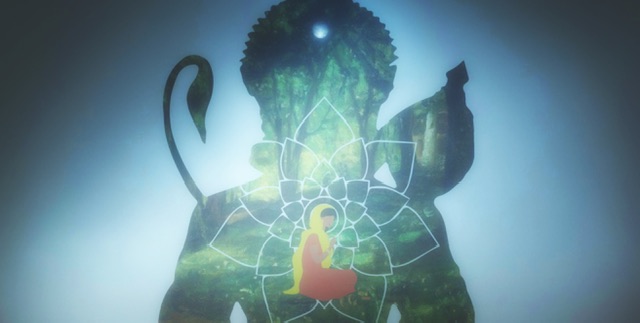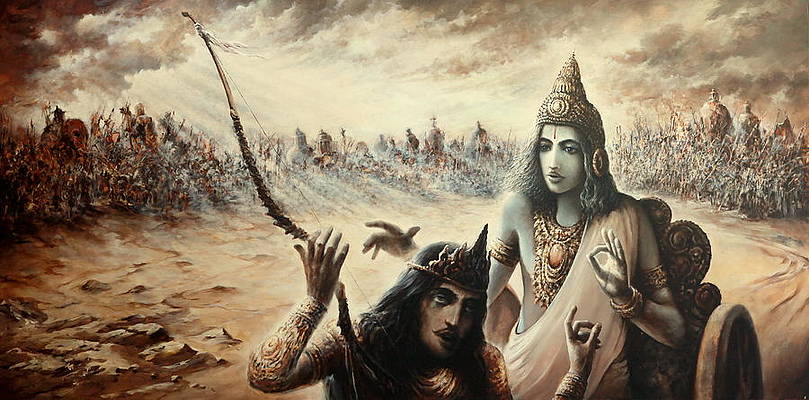Of the three heinous crimes enumerated in the Shaastras, Gau Hatya (cow slaughter) is one (Rigveda 7.56.17). The ones who think this to be old-fashioned or redundant, may have to pay a price for their negligence for among the few gems of wisdom from the vedic philosophy which the modern man has been able to understand and appreciate, is the theory of action and reaction. Every action has an equal and opposite reaction. While killing cows is a direct ticket to hells (yes, they do exist), service to the cow is called as the route to moksha. Let us delve a little more on this magical creature, as described by the vedic masters.
During the episode of churning of the celestial ocean, five divine cows (kamdhenus) emerged – Nanda, Subhadra, Surabhi, Sushila and Bahula. The vedic Lexicon, Nighantu, gives amongst other synonyms of Gau [cow] the words Aghnya, Ahi and Aditi. Yaska, the commentator on Nighantu, defines these as-
* Aghnya – the one that ought not to be killed
*Ahi – the one that must not be slaughtered
*Aditi – the one that should not be cut into pieces
These words appear frequently in Rigveda in context of the cow.
- Cow “the Aghnya” brings us health and prosperity. (Rigveda 1.164.27)
- There should be excellent facility for pure water for Aghnya Cow. (Rigveda 5.83.8)
- Those who feed on human, horse or animal flesh and those who destroy milk-giving Aghnyas should be severely punished. (Rigveda 10.87.16)
- Do not kill cows. Cow is innocent and Aditi, that ought not to be cut into pieces. (Rigveda 8.101.15)
The 28th Sukta of 6th Mandal of Rigveda extols the cow,
- Everyone should ensure that cows are free from miseries and kept healthy.
- God blesses those who take care of cows.
- Even the enemies should not use any weapon on cows.
- No one should slaughter the cow.
- Cow brings prosperity and strength.
- If cows remain healthy and happy, men and women shall also remain disease-free and prosperous.
- May the cow eat green grass and pure water. May they not be killed and bring prosperity to us.
In Atharva Veda, the cow is formally designated as Lord Vishnu, and ‘all that the Sun surveys’.
Yajurveda forbids killing of cows, for they provide energizing food for human beings.
- Do not kill cows and bulls who always deserve to be protected. (Yajurveda 13.49)
- The Aghnya cows and bulls bring you prosperity. (Yajurveda 12.73)
- Destroy those who kill cows. (Yajurveda 30.18)
In Tretayug, Lord Krishna is said to have lifted Mount Govardhan to protect his herd of cows, cowboys and milkmaids. In the war of Viratnagar, Arjuna risked the 13-year exile, by disclosing his identity to protect the cows which had been abducted by the Kauravas. Such is the importance of cow. No yagya, which is an offering to the gods, is complete without the ghee and upla from the cow. Gaudaan has been considered as the highest act of charity. If you cannot afford to give a cow in charity, you can certainly feed one. Ask your grandparents and they would tell you how in their times, every household had a cow and the first meal in the house was made for the cow. Not a superstition or ritual, but because cow represents creation in totality. Nurturing it is nurturing creation, harbinger of health, prosperity and growth.
I have given reference from Vedas because they are texts, which have given us the biggest secrets of Creation; and the majority of scientific theory including Einstein’s E=mc2 and Pythagoras theorem, all are already given in the Vedas. So, it would be foolish to think that just because modern science has endorsed the above two theories, so only they are valid. If they are valid, then the brilliant minds that gave us these theories so many thousands of years ago knew what they were talking about, when they spoke about the cow.





